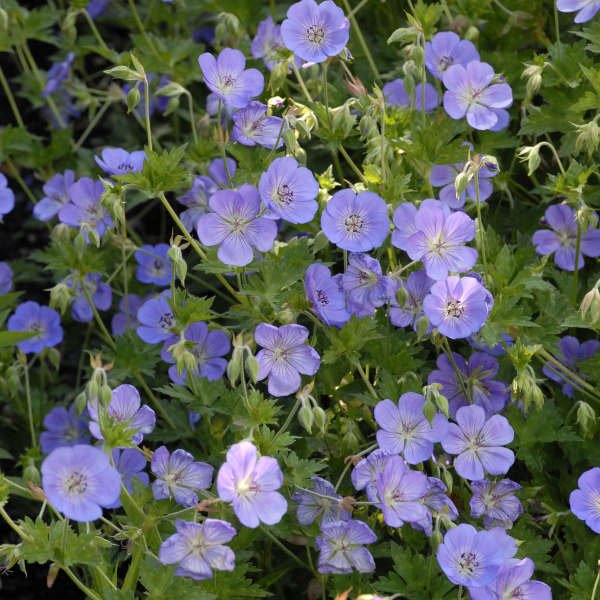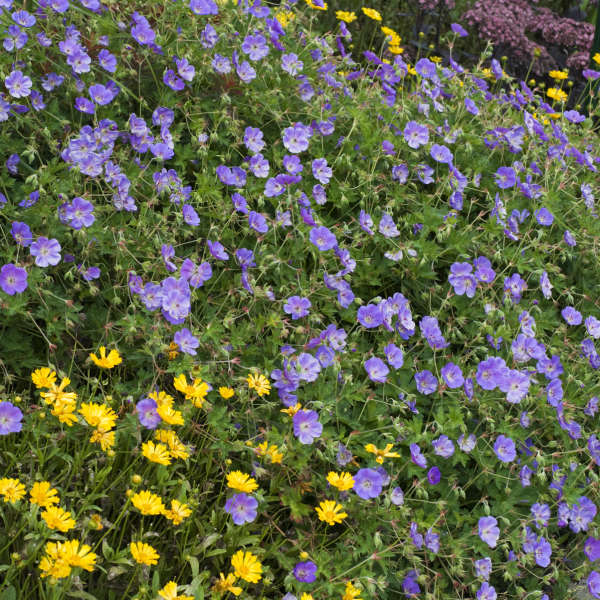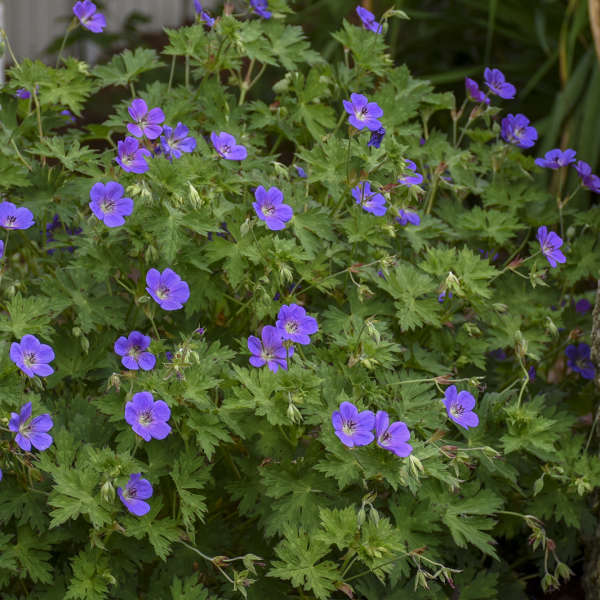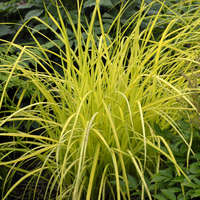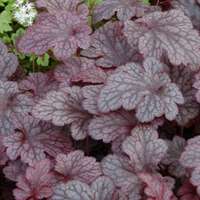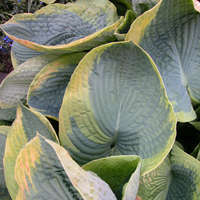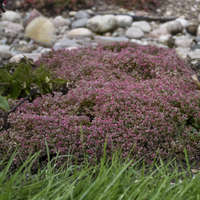Geranium 'Rozanne' PP12175
Common Name: Hardy Geranium, Cranesbill
Huge, glowing violet blue, saucer-shaped flowers with distinctive white eyes and reddish-purple veining are held above mounds of deep green foliage that is slightly marbled with chartreuse. Geranium 'Rozanne' is one of the longest blooming perennials in the garden. It is an amazingly free-flowering cultivar as its flowers are sterile; it keeps the blooms coming from late spring into mid-fall.
Leave plenty of room to grow this wide spreading perennial. In one season, one vigorous plant will cover a 2-3 sq. foot area. It looks especially nice when complimented by yellow or chartreuse flowers or foliage. From Rozanne and Friends™.
Hardy geraniums are wonderful filler plants for any landscape, either residential or commercial. They blend nicely with most other perennials and offer continuous color throughout the summer months.
